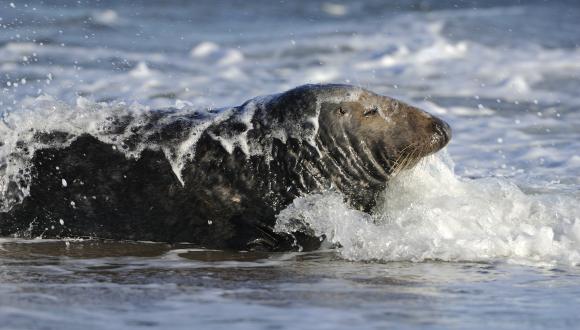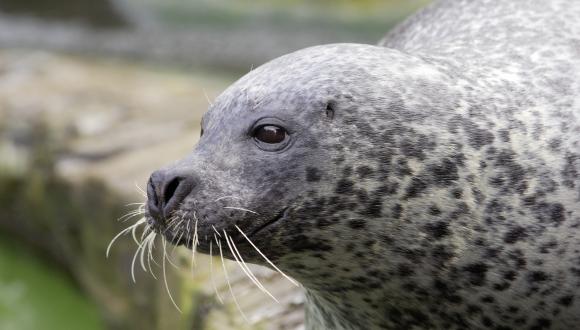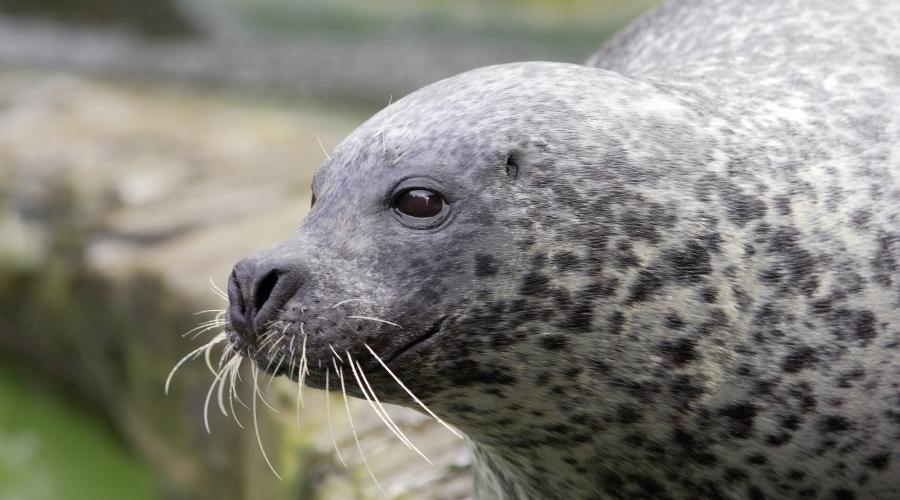
Seals
Both the harbour seal and the globally rare grey seal are present around Scotland’s coast in internationally important numbers.
The harbour or common seal is widespread in the northern hemisphere. There are five sub-species, and the European Phoca vitulina vitulina can be found in the North Atlantic and North Pacific. There are about 100,000 harbour seals in Europe. About 30% of this population is found in UK waters, and 80% of these in Scottish waters.
The grey seal (Halichoerus grypus) is only found in the North Atlantic, the Baltic Sea and the Barents Sea. As one of the rarer seal species worldwide, its entire population is around 400,000 individuals. About 40% of all grey seals live in UK waters – and about 90% of this number breed at colonies in Scotland.
Harbour seals
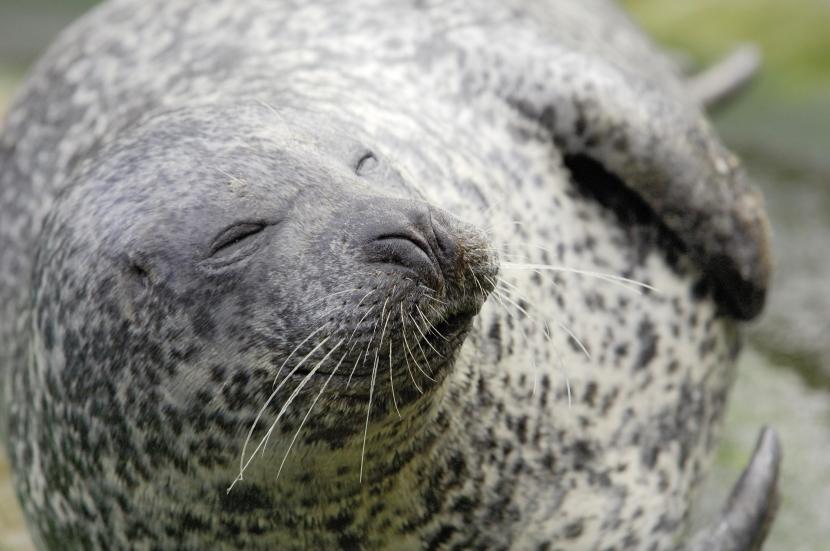
Harbour seal. ©Lorne Gill/NatureScot
Harbour seals can live for up to 20-30 years. Adult harbour seals are about 1.5 m in length and can weigh in the region of 80-100 kg. It’s hard to tell males and females apart, but males are slightly larger than females. Harbour seals have a rounded, dog-like head, with a steep forehead and eyes to the front of their face.
Harbour seals prefer to come ashore in sheltered waters and they usually feed within 40-50 km from their haul-out site.
Harbour seals are widespread around the west coast of Scotland and throughout the Hebrides and the Northern Isles, but are found in fewer numbers on the Scottish east coast.
Female harbour seals give birth in June and July, often returning to haul-out sites where they themselves were born. Pups are born having already shed their white coat in the womb and can swim almost immediately.
Grey seals
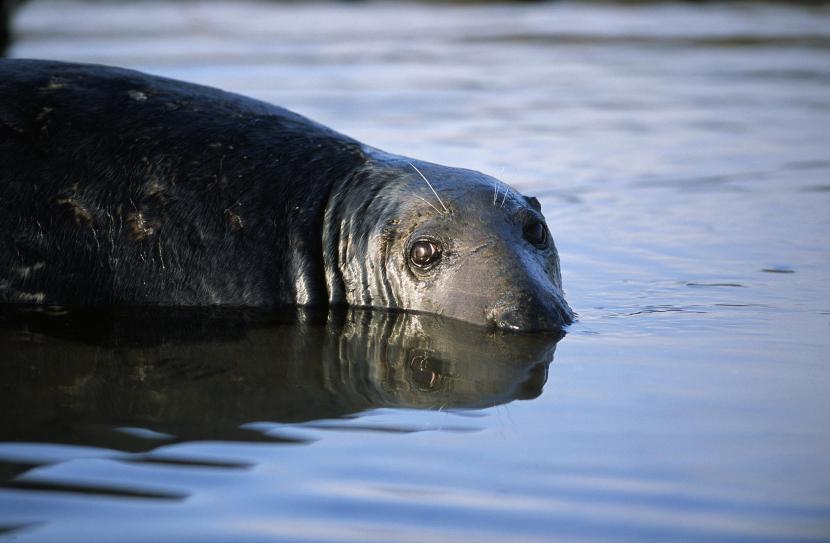
Grey seals can also live for 20-30 years. They are much bigger than harbour seals and adult males can weigh up to 300 kg and can be 2 m in length, with adult females being smaller than the males. Grey seals have a more oval head than harbour seals with a long, sloping 'Roman nose' and eyes more towards the sides of their head.
Grey seals travel large distances to forage, frequently further than 100 km, and favour exposed coasts and islands to come ashore. Such areas include:
- outer fringes of Shetland and Orkney
- west coast of the Outer Hebrides
- outer islands in the Inner Hebrides
- outer sandbanks in the Firth of Tay and the Moray Firth.
Large groups of pregnant grey seal females return to traditional breeding sites on rocky coasts in the autumn to give birth. Pups are born with white hair that is moulted over the first three weeks of life, during which they remain at the colony before venturing out to sea.
Grey seal pup startled by a wave
Threats to seals
Threats caused by humans include:
- pollution – for example, pups are particularly vulnerable to physical contamination from oil spills
- toxic chemicals – these build up in the blubber when ingested and can be passed on to pups from their mothers
- fishing nets – seals may become entangled, leading to injury or drowning
- marine renewable energy turbines – there is a potential collision risk with moving turbine blades
- disturbance – for example, by people getting too close to seal haul-out sites
- climate change – for example, this could affect the availability of prey and result in changes to seal distribution.
The main natural threats are:
- availability of prey resource – for example, competition for food both between harbour and grey seals, and from other species
- direct predation – for example, by grey seals on harbour seals, and killer whales on either species
- disease – such as phocine distemper virus, a disease which devastated harbour seal populations on England’s east coast in 1988 and 2002.
Harbour seals in the Northern Isles and on the east coast of Scotland have seen a major decline in numbers since the mid-1990s. The reasons are not yet know, but potential reasons include: prey quality and availability, competition with other marine predators, direct predation, and toxins from harmful algal blooms. In 2012, the Sea Mammal Research Unit began a major programme of research to investigate the decline.
Protection of seals
Learn about seals as protected species.
Find out about seals and licensing.
Report a sighting
Find out how to submit records of mammal sightings on The Mammal Society website.
To report an injured or stranded live animal, call the Scottish SPCA on 03000 999 999.
To report a dead stranded marine animal, call the Scottish Marine Animal Stranding Hotline on 07979 245893.
